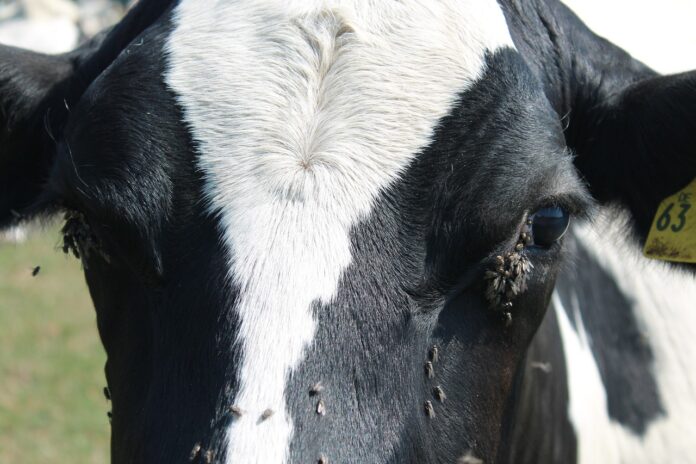I lived in the country of Panama in 1964 and 1965 as a youngster and learned the construction of the Panama Canal in the early 1900’s was very costly in human lives from the mosquito-transmitted disease of malaria. Insect pests like flies, gnats and mosquitoes transmit disease to humans and cattle and produce losses for livestock.
“Flies are such a serious pest to livestock that most stockmen make some effort to control them. Two general methods of control are recommended: 1. elimination of breeding places, and 2. systematic killing of large numbers of flies. Under practical conditions, fly control is a serious problem even when the approved methods are systematically followed.”
That quote was taken from a Kansas University research publication. Can you guess what year that publication was published? It was 1943. T fly control business will never go void.
Types of flies
The stable fly and house fly are two flies of consequence in housed livestock. The stable fly lays eggs in manure and decaying matter. It rests in tall grass and takes blood meals from cattle, mostly from leg region. This causes cattle to bunch. It only takes four stable flies per cow to decrease milk production by 2 to 3 pounds per cow per day. House flies are a nuisance to farm workers, spread disease and breed in manure and moist places. House flies stay can carry bovine respiratory disease (BRD), mastitis, scours, typhoid, anthrax, anaplaz and vibrio.
Common sense sanitation is critical to proper fly control. They feed and breed low but rest high. The horn fly and face fly reside primarily in pasture animals but will affect housed livestock. Horn flies consume blood meals from cow’s backs and breed in manure. Face flies are found on cows’ faces, muzzle, and eyes. Feed on saliva, tears and mucus and spread pinkeye. Biting flies that cause bleeding include green-headed horse fly, black horse fly and deer fly. Heel flies lay their eggs in the hair of cattle and burrow into the skin which migrate to the neck and spine. The larvae will cut through the hide (warble) and reduce performance.
Sanitation and control
Integrated pest management is a systematic and environmentally correct approach to pest management. It relies on common-sense practices along with economical control means to manage pests. Two methods to control flies, sanitation, and control, has not changed from 1943
Sanitation involves trimming grass and weeds around buildings and calf hutches. Remove standing water and provide proper water drainage around facilities, feed storage and cattle lots. Remove manure from building structures and provide dry bedding. Any decaying matter can be a breeding ground.
Environmentally safe and economical control methods include parasitic wasps, aerosol and residual sprays, livestock pour-ons, sticky tapes, feed-through products, baits and granulars. Sprays, sticky traps, baits and pour-ons are useful to control adult flies. A feed-through will control larvae eggs and kill immature flies. A combination of all methods gives the best results. An integrated pest control audit from a qualified technician can make a priority list of recommendations.
Start early
Control methods in the feed should be started early. Start 30 days prior to outside temperatures above 65 degrees and continue the fly control feed through until 30 days after the first killing frost. Benchmark cost for fly control is $0.75 to $2 per head per year. Feed-through products, like Clarifly, is a larvicide that prevents 96% of house and stable flies from emerging from maggots. There is no documented resistance, so control improves year after year. Clarifly can be fed in milk to calves. Read label on all control products and feed according to approved label in your state. What if you do not start feeding Clarifly soon enough and stable flies get ahead of the Clarifly? It will take 3 to 4 weeks to get ahead of an infestation and during this time diligence with adult sprays will be needed.
Dairy farmers provide great care for their cows and calves. Proper fly control improves the cow comfort and reduces transmission of some 65 known diseases that can be spread to humans. Additional resources: https://dairy.osu.edu/newsletter/buckeye-dairy-news/volume-10-issue-3/controlling-flies-farms.













